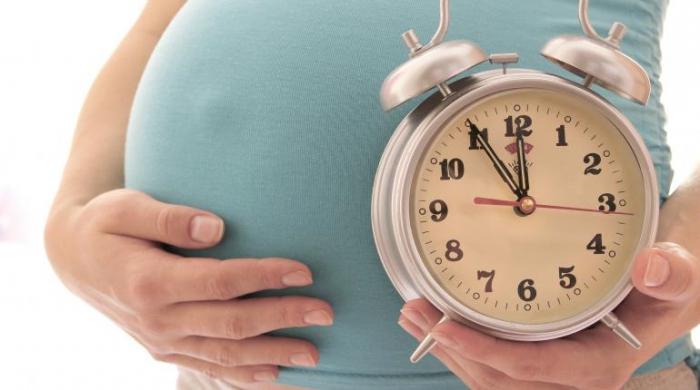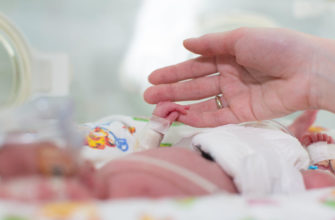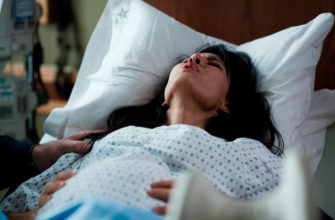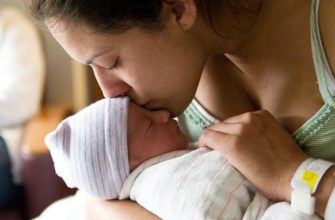Article by Sarah Wickam, translation by Catherine of Zhytomyr. Published in AIMS magazine (AIMS - Alliance for the Improvement of Maternity Services - British public organization “Union for Improving Maternity Services”) AIMS JOURNAL Vol: 26 No: 2 2014 6-8

In modern Western culture, most women are aware of the stimulation of childbirth even before they become pregnant.
They know that they offer stimulation if it is believed that it will be safer for the baby to be born than to remain in the womb. I also suspect that many women know that one of the main reasons for prescribing stimulation is the gestational age, after which the baby is considered to be “postponed”. Also, many women know some other women who have been stimulated by childbirth, so they also know the other stated causes of stimulation. These reasons may turn out to be the woman’s age, if it is higher than “normal”, and premature discharge of water, and / or health problems, as well as pregnancy complications, in which stimulation of labor may be necessary
But that's not all. The decision, whether or not to agree on the stimulation of labor, has many more aspects that it also makes sense to take into account. I have spent the last few months studying this topic. The result was a recent edition (amended and supplemented) of my book, Stimulating Childbirth: Making an informed decision (Wickham S (2014) Inducing Labor: making informed decisions. AIMS, London). In May, for the presentation of this book in Bristol, I prepared a presentation entitled “10 Facts About Birth Stimulation That Every Woman Should Know”. I was not going to dwell on well-known things (see above); instead, I wanted to draw your attention to some facts, circumstances and assumptions, which are less known and which, perhaps, it makes sense to take into account when we decide on stimulation. In fact, of course, it is worth knowing much more, so my list of ten facts is just a launching pad for discussion, and not exhaustive information on the issue.
1. This is not like regular birth
This is clear to someone, but I know from experience that not everyone. Stimulated childbirth is very different from childbirth, which began spontaneously. Of course, the personal experience of giving birth to each woman is different, but there are differences that are almost universal. Firstly, to stimulate labor, a woman is injected with a synthetic hormone, which causes more pain than in spontaneous labor. And this pain comes faster. Synthetic hormones, unlike our own hormones, do not cause the release of painkillers into the bloodstream, which in normal birth are produced by the female body. In addition, stimulation can have its own side effects, which means that they will observe such a woman more closely.Such closer monitoring can lead to a restriction of a woman’s mobility, which increases stress and, consequently, pain, and this, in turn, can cause a woman to feel that the situation is getting out of control.
2. It hurts
I started talking about this in paragraph 1, but there are other sources of pain that I think women should know about before making a decision. For example, contractions caused by a prostaglandin gel or balloon, which are often used in the first stage of labor stimulation, can quickly become painful in the absence of any visible effect. This gives a negative experience of childbirth, in addition, in such a situation it is easy to get tired and / or lose the presence of mind much earlier than at the early stage of spontaneous childbirth. Contractions caused by oxytocin can also be very strong, and often a woman has less time to adapt to them than in spontaneous labor. More frequent vaginal examinations and other manipulations (for example, the use of a balloon) can cause additional pain.
3. “The service comes in a package”
I wrote a lot about this on my website, so I won’t especially repeat it. But the fact that they continue to ask me whether physiological management of the third period (placenta birth) is possible, as well as the rejection of CTG and / or vaginal examination if the birth was stimulated, makes me think that this is not a well-known fact. Not that someone wants to stop a woman from making the right decision. But the drugs that are used to stimulate labor are quite powerful. They block the release of their own hormones, and this can cause problems in a woman and a child. And the effect of these drugs that stimulate childbirth, you need to evaluate, control and, if necessary, compensate. If a woman believes that such side effects of stimulation is not what she needs, then it might be better to ask herself if this stimulation is necessary at all.
4. The exfoliation of the membranes is not so harmless
In our time, it is customary to offer women “peel off” or “manually separate” the fetal membranes at a certain stage of pregnancy in the hope that this will reduce the number of women who need drug stimulation. Even if we ignore the assumption that all women who are offered stimulation agree to it, we must understand that separation of the membrane can cause discomfort, blood flow and irregular contractions, and according to some studies, this procedure speeds up the onset of labor by only 24 hours . The authors of a review published on Cochrane conclude: “It does not seem that the routine use of manual separation of membranes from 38 weeks has significant clinical benefits. Carrying out this manipulation to stimulate labor should be considered in conjunction with the discomfort of the woman and other side effects of the procedure ”(Вoulvain M, Stan CM, Irion O (2005) Membrane sweeping for induction of labor. Cohrane Database of Systematic Reviews 2005, Issue I. Art. No .: CD00451. DOI: 10.1002 / 14651858.CD000451.pub2).
5. “Natural stimulation" is an oxymoron
I also wrote about this elsewhere, and this article can be read on my website (Wickam S (2012) When is induction not induction? Essentially MIDRIS 3 (9): 50-51), but the main idea is easy to state: either we we are waiting for the natural start of childbirth, as it happens according to natural laws, or we are trying to intervene and cause childbirth earlier than they would start on their own. Sometimes there are good reasons for causing childbirth, but if a woman takes castor oil or asks her midwife to manually remove the membranes daily or chooses some other “folk” method of stimulation, then she is going to call her childbirth with non-medication. Please note that I am not trying to say that something is wrong here, but I believe that since we live in a culture that depreciates female bodily functions, it is important to clearly understand what our intentions are.
6. This is NOT a law
While I was writing the book, I was amazed to find out that a call came from AIMS from a woman whose midwife said: “We need to stimulate you 24 hours after the waters leave. This is the law. ” This woman agreed to stimulate the birth, which turned out to be very traumatic for her. I want all women to know that there are no laws that determine what a pregnant woman should or should not do. Both me and AIMS are very worried. Each physician who claims this should be reported to a higher organization. Any woman who is threatened in any way or simply claimed something like that, we ask you to contact AIMS for information and other support.
7. This is not “just a drop”
I am always worried when I hear in the words of midwives or doctors an underestimation of the recommended intervention. I especially do not like the expression “drop” or “help a little”, used in relation to intravenous drip of oxytocin. This is a powerful drug, and so it should be treated. It can cause fetal distress, and in some clinics it is generally accepted to increase the dose of oxytocin until the child reacts with distress (!), And only then stop increasing the dose - it is believed that the proper level of oxytocin is determined in this way. But even when the dose of oxytocin is no longer increased, as soon as effective contractions are established, this drug should be treated with attention, and professionals should not underestimate, whether it is intentional or not, its effect.
8. The female body will not fail. Stimulation and system - easily
The name speaks for itself. Stimulation does not always work, and the woman is not to blame. I would like to reassure all women whose births have unsuccessfully stimulated that everything is in order with them and their bodies. This is another case where some of the expressions used in the roadblock are clearly worth revising.
9. The risks of overtaking come later, they are lower, and they are more difficult to prevent
Below I give the data that I use here and in the book. This is a summary of the results of a study examining the risk of stillbirth at different stages of pregnancy. If you look at the values - and I especially ask you to compare the risks
at 37 and 42 weeks of pregnancy, you will see that the increase in risk does not occur at all as early as many people think, and that the increase in risk is not as strong as is often assumed. In fact, the outcome of labor in women who were expecting a spontaneous start of labor and in women who gave birth with stimulation were so similar that not a single study comparing childbirth with stimulation and spontaneous labor could demonstrate the benefits of stimulation. Only when these studies were brought together did it become possible to notice small differences. However, the quality of one of the studies (just that which pushed the scales) leaves much to be desired. Based on this, I would like to ask if there are real benefits from the current protocols offering stimulation of labor after 40, but up to 42 weeks. The book on this subject says much more, including a full review of the literature on the topic.
Risk of stillbirth of unclear etiology
for a period of 35 weeks 1: 500
for a period of 36 weeks 1: 556
for a period of 37 weeks 1: 645
for a period of 38 weeks 1: 730
for a period of 39 weeks 1: 840
for a period of 40 weeks 1: 926
for a period of 41 weeks 1: 826
for a period of 42 weeks 1: 769
for a period of 43 weeks 1: 633
Adapted from Cotzias CS, Paterson-Brown S, Fisk NM (1999) Prospective risk of unexplained stillbirth in singleton pregnancies at term population based analysis. BMJ 1999; 319: 287. doi: dx.doi.org/10.1136/bmj.319.7205.287
10. Risks for old-timers are not as specific as is commonly believed
The final paragraph refers to the assertion that with an increase in the woman's age, the risks increase, and therefore their births need to be stimulated. Indeed, some studies suggest a correlation between an increase in maternal age and an increase in the number of some complications, but there are several reasons to be wary of this data.Women of “older” age are more often examined and more often subjected to various interventions, and this in itself can cause complications. “Older” women are more likely to have health problems, and it’s hard to say what causes the complications - the woman’s health status or her age. The studies that dealt with this problem do not always separate one from the other, and in the studies where this was done, women who gave birth for a long time, and which cannot be compared with today's women, participated. Thus, in this area there is an extremely shortage of material, and modern studies on this subject, unfortunately, have only led to the fact that they are increasingly stimulating younger women and at earlier dates, so women also don’t have much from the results of such studies good.
A day or two after my report, I asked some colleagues what facts they would list, and they suggested many interesting points. It was not ten facts, but tens and almost hundreds of things that we would like women to know about. But at least this is the beginning. You can find more information about this (and much more) in the book “Stimulation of Childbirth: Make an informed decision” published by AIMS. At present, our goal is to bring this information to as many women as possible before they decide on stimulation.
Sarah Wickam is a midwife, teacher, author and researcher, she had an extensive and diverse practice, as well as was engaged in obstetric education, research, published articles and books.
Currently, Sarah is organizing seminars “Recipes for a normal birth” for midwives and other professionals working in obstetrics, writes books for AIMS, speaks at various seminars and conferences, consults a lot and maintains a column twice a week on her website, where you can read many articles. Her latest book is Stimulation of Childbirth: Make an informed decision.









This article is similar to gossip. And why should women know that? Doctors know better what to do at one time or another, and we will intervene here without the proper knowledge, relying only on such articles. I had a birth stimulation, and compared to all spontaneous births, what I know is the best that could be!